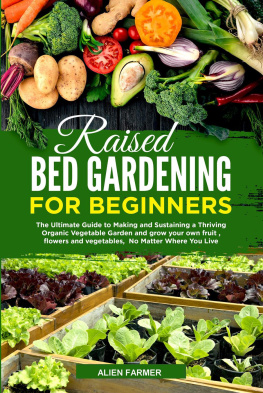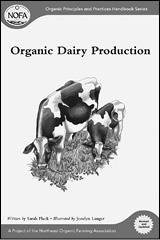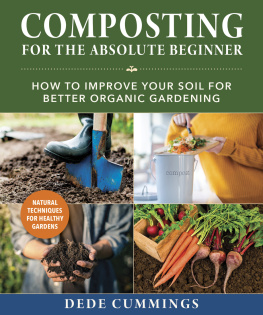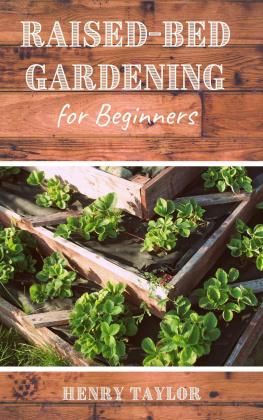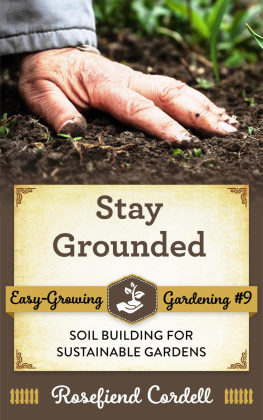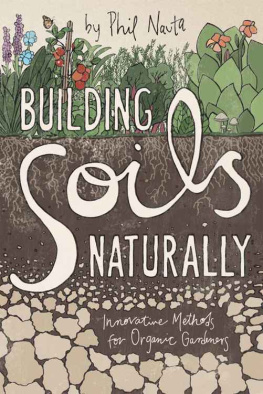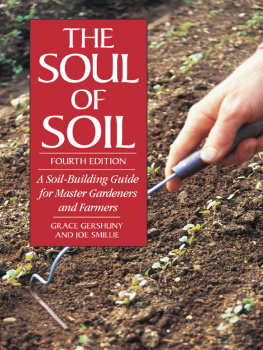The Secrets of SoilBuilding
Booklet #2 in the AbundantHarvests series:
High-Yield Vegetable Gardening for Southern California
by
Joanne Poyourow
published bySmashwords
Copyright 2015 byJoanne Poyourow
All rights reserved.
ISBN 9781311943750
Publishing history: Smashwords ebook August 2015. Paperback booklet November 2012 (second edition).
Additional copies areavailable via www.Change-Making.com
Table of Contents
Healthy garden soil isALIVE.
One teaspoon of compost maycontain:
1 billion invisiblebacteria
(20,000 to 30,000 species ofthem),
400 to 900 feet of fungal hyphae(thread-like structures),
10,000 to 50,000 protozoa, and 30to 300 nematodes.
Then there are algaes and slimemolds,
and arthropods (insects orbugs),
both visible andmicroscopic.
--Jeff Lowenfels and Wayne Lewis(1)
Soil Building
The gooey brown earthworms are as fat as myfingers and about 6 inches long. When I pull them out of their box,I make certain to jiggle them, just so. Invariably someone in theaudience shrieks. Are they REAL!?
Theyre oversized jelly-plastic earthwormsleft over from a friends Halloween display, but my wiggly littlefriends make a great visual at my organic vegetable gardeningclasses.
I also bring a copy of Bianca Lavies book,Compost Critters.(2) Lavies took her magnifying camera outto her compost pile and photographed everything she found there arthropods, slime molds, pill bugs, fungi. Her in-depth photos(eew, I wont say gorgeous) remind us that the earthworms we loveand squeal away from are only the visible part of a vast spectrumof life.
And to be a successful organic vegetablegardener, we must learn how to take care of that vast spectrum ofsoil life. In a nutshell, that's what this ebook isabout.
John Jeavons tells us:
Feed your soil.
Your soil feeds your plants
and your plants feed you.
I might amend that ever-so-slightly to say:feed your soil critters. They are the ones that feed yourplants.
It turns out that millions of soil critters worms, bugs, fungi, bacteria, protozoa, nematodes work insymbiotic relationships, in productive partnership with yourplants. The soil critters help break down particles within the soilinto nutrients your plants can access. Without lively and activesoil life, your plants will starve.
How to Build Great Soil
1. Take care of yoursoil life provide food, water, air, shelter andprotection.
-- FOOD: Use compost fold it into your soil.Meanwhile, start making your own homemade compost.
-- WATER: Prevent runoff and erosion.Infiltrate rainwater. Irrigate long, slow, and deep.
-- AIR: Keep your feet on the paths to avoidcompacting your growing beds.
-- SHELTER: Use mulch like a quilt on top ofyour garden bed.
-- PROTECTION: Quit the chemicals all ofthem.
2. Plant legumes to capturenitrogen.
3. Rotate your crops to break the chain ofsoil-borne pests and nutrient depletion.
4. Compost everything you possibly can.Consider growing carbon crops and green manures to provide rawmaterial for your compost pile.
5. Use nurse crops and cover crops to maintainan ongoing home for your homegrown soil populations.

We didn't know all this when we started ourgarden, the Community Garden at Holy Nativity in the Westchesterneighborhood of Los Angeles. Perhaps we had a general idea, ormaybe it was mere intuition. But it has taken time (years) and lotsof study and observation to bring these ideas to fruition in thecurrent form both as the ebook you are reading, and as arichly-alive, beautiful, and highly-productive urbangarden.
The Community Garden at Holy Nativity wasfounded in 2008 in the narrow urban spaces of a small churchyard.Because the food grown in the Garden feeds needy people via thelocal food pantry, our team of volunteers has always been focusedon productivity and pushing for high yields.
But the Community Garden at Holy Nativityserves multiple missions: sustainability education andcommunity-building, in addition to social justice. Although westarted with a small area a little less than 2,000 square feet ofwhat used to be scruffy Bermuda-grass lawn today the Garden wrapsthe entire property. It now includes on-site composting, rainwaterharvesting, mini-orchards, a cob bread oven, live bunnies, muralsand sculpture, and much more.
In 2009, we were asked to help build anothergarden, on a Los Angeles Unified School District property. Thisgarden eventually became the Emerson Avenue Community Garden. Itmerges a school garden with a traditional plot-style communitygarden and a community pocket park.
Our two public gardens, my personal homegarden, and the gardens of people I have assisted might seem verydifferent from one another from a human perspective. But woventhrough all of them are the same lessons, reinforced again andagain: If you want to become a successful gardener, build greatsoil. And to do that you have to take care of your soilcritters.
Take Care of Your SoilCritters
Tiny dogs arereally popular pets right now. We all know what it takes to takecare of one of those: Food. Water. Someone whos thinking carefullymight mention shelter and protection. Not too many people rememberto list air.
Our earthworms and all their invisiblecompatriots need the same things: food, water, air, shelter,protection. And as an organic gardener, its up to us to makesure they get what they need. Rather than taking care of ourplants, to be better organic gardeners we should focus on takingcare of our soil critters.
What do you suppose happens to all these soilcritters when you just this once apply petrochemicals? Yousear them out of existence. You wipe the slate clean. You kill offthis vulnerable network of soil life. Suddenly youre dealing withstripped-out, dead, inactive dirt. And you wonder why your gardenisnt doing very well.
Then because theres nothing alive in the soilto help feed your plant, the garden center at the big warehousestore tells you to pour more and more chemicals (marketed asfertilizer) onto this deadened soil in order to keep your plantsgoing. Each application of sprays, weed killers, etc., perpetuatesthe dependency. Whatever had gotten established, whatever hatchedfrom the few surviving eggs has now been obliterated. And yourefaced with starting the rebuilding process all overagain.
When you garden organically, the soil crittersare our allies. The health of our plants depends upon them. Thusthe essence of organic gardening is cultivating this rich seriesof symbiotic relationships.
The Law of the Return
Nature operates incycles: The seedling grows and becomes a plant. The plant flowersand bears fruit, then seed. The old plant dies, to make rich humusto nourish the next generation of plants.
Over the course of the modern age, mankind hascreated an extractive lifestyle: Raw materials are harvestedon one continent, shipped to another continent for manufacture,shipped to yet another continent for warehousing, then shipped tostores. The goods are then purchased, in many case used only once(so-called disposable goods), and then thrown to a mythical placewe euphemistically call away. That really means they're shippedto yet another location and sealed inside a toxic pile of waste.Every step of the way, we're burning fossil fuels and increasinggreenhouse gas emissions. It's a linear, extractiveprocess.
It's happening in our vegetable gardens andagriculture, too. Everything we harvest is being removed from thecycle. In conventional agriculture, crop chaff is often removedfrom the field, in some cases sold for use as a byproduct, orburned, or sold for biofuel. Meanwhile, worldwide our arable soilsare being depleted at an alarming rate.
Next page
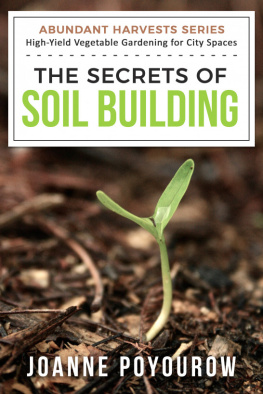
![Dowding - The Year-Round Vegetable Gardener’s Bible [7 Books in 1]](/uploads/posts/book/453239/thumbs/dowding-the-year-round-vegetable-gardener-s.jpg)
